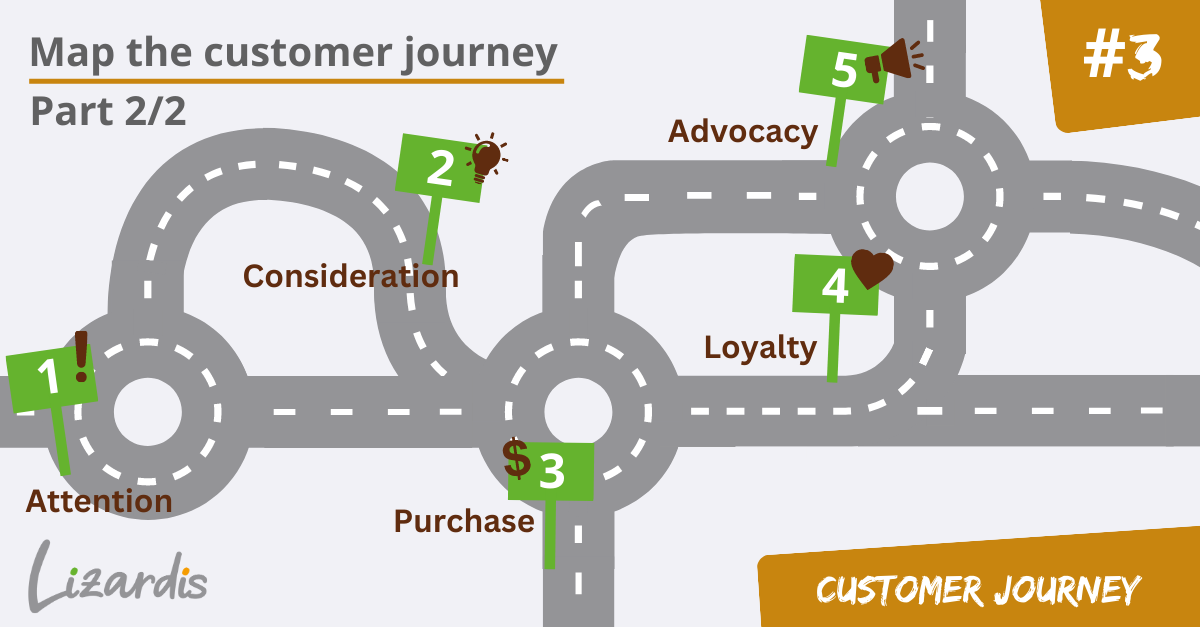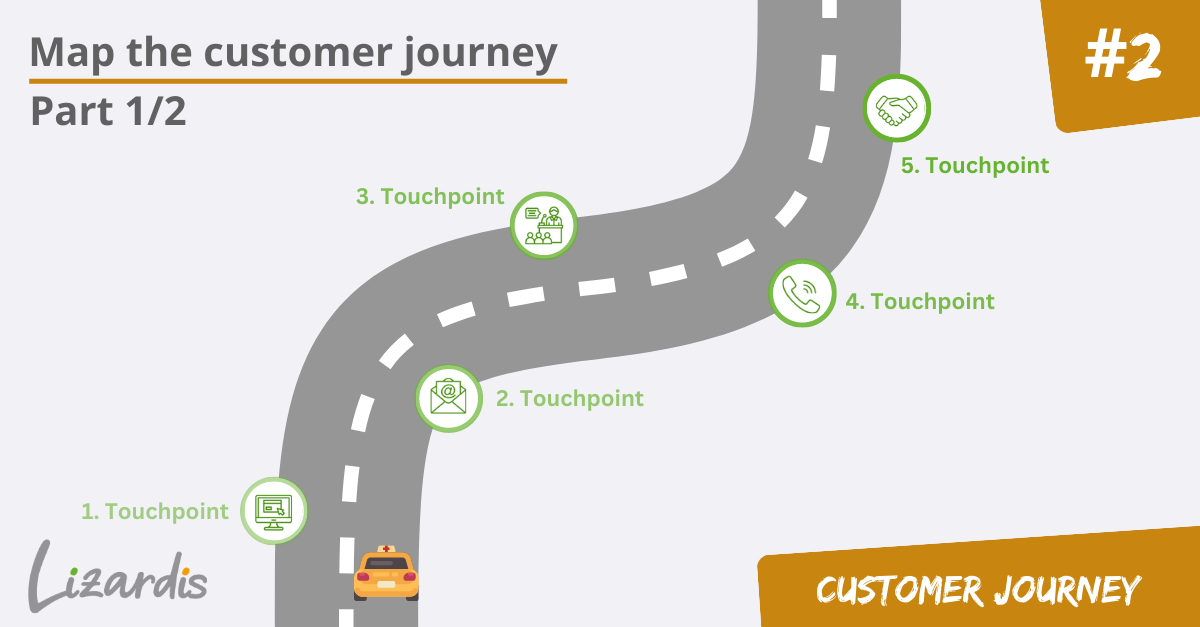Hannover, 18 July 2023
In my previous post, I looked at the topic of remote engagement and explored what opportunities this channel offers, what technologies can be used for this purpose, and what requirements must be met for the channel to be used after Covid-19.
In this article, I will go one step further and review another channel: the so-called Rep Triggered Emails. I will outline what approaches exist for this channel in the life sciences industry, what tools are used and what data can be obtained in this way. Finally, we will also see what role this customer data plays in evaluating customer engagement.
Rep Triggered Email – what is that?
Rep Triggered Email, or RTE for short, in the life sciences industry stands for emails that, as the name suggests, are sent from the sales representative or the MSL to the HCP.
This is not done using Microsoft Outlook, but either from within the CRM system, such as Veeva CRM or IQVIA’s OCE, or by using an external solution, usually in the form of an app, that exchanges data with the CRM system or some other solution that manages consent. RTEs offer several advantages in this regard:
When generating an RTE, the Rep uses a standardized template that is either fully prepared and ready for immediate dispatch or can be customized with the appropriate content by the end user using fragments or building blocks.
The content is selected from a corresponding library and allows for answers to questions from the customer, underlines the argumentation of the life science company on typical questions (concerning e.g. products and treatment approaches) or contains references to interesting events.
Both the templates and the fragments are usually created in advance by the marketing department and assigned to the representative after they have been approved by Legal, Medical and Regulatory, or LMR for short. This helps the life science company ensure that no outdated, incorrect or even non-compliant information is sent to the customer.
With the help of RTEs, a life science company can evaluate whether the email was opened by the customer and whether he clicked on one or more links. In the case of an email sent with Microsoft Outlook, it is usually not possible to determine whether the email has been read. With these, no links were usually sent either, but rather corresponding documents, for which it is again not possible to determine whether the HCP ever opened them.
Sending an RTE via the CRM system or by means of an external app such as Pitcher Impact can only take place if the life sciences company has the customer’s consent for the email channel, i.e. the customer’s permission to use his email address for advertising purposes.
If this is not yet at hand or has been revoked, the dispatch is technically blocked. In this way, the life sciences company ensures that no data protection violations have taken place.
The dispatch of the RTE is automatically documented as a corresponding customer contact in the CRM system. An additional administrative activity of the rep is therefore not necessary. The RTEs are mapped in the respective customer profile, but also additional information such as the time of the first opening of the RTE, the opening rate, click rates on integrated links and, if applicable, the duration of stay on the associated web pages.
In general, the representative can also freely design the RTE template concerning the form of address to the customer, the wording of the text and the selection of the greeting type, not only with regard to the content selection.
As a result, the customer receives a personalized email. By doing so, the life sciences company enables the representative to provide an individualized form of customer service while adhering to compliance requirements and data protection regulations, as well as ensuring the accuracy of medical information.
What obstacles must be overcome when introducing or using the Rep Triggered Email channel?
To successfully introduce and use RTE as a channel in the life sciences company, several requirements must be met:
To simply add the RTE channel to the existing channels does not go far enough. Rather, a strategy is needed with the help of which RTE can be meaningfully and helpfully integrated so that all available channels can at least be understood as part of a multichannel approach.
Ideally, RTE will even already be used as part of a cross-channel strategy or made available on the way to implementing an omnichannel strategy. The key element here is that it is permissible to use the RTE channel in a coordinated manner with the other channels. The development of a corresponding strategy is also accompanied by the goals to be achieved with this channel and a description of the steps to achieve these goals.
Life sciences companies must obtain a written confirmation from the HCPs that they are allowed to send promotional emails to their customers. Obtaining this consent, the opt-in (also known as consent capture), must be compliant with data protection regulations.
Whether a double opt-in process is used (in which the HCP receives an initial email that he or she must first confirm before the content can be sent) or a single opt-in process (in which the customer gives his or her consent by signing on the tablet as soon as the email address is entered) is irrelevant. In either case, the life sciences company has received the email address, as well as the consent for that address to be used.
The system used to send the RTE must in any case ensure that no email is sent to physicians, pharmacists and healthcare professionals for whom consent has not yet been obtained or has been withdrawn.
When implementing the Rep Triggered Email channel, it is essential to ensure that enough email templates are available and that new templates are added or updated on a regular basis. If the representatives run out of material or have to send a template to their customers multiple times, it is not only the acceptance of the RTE channel within the life sciences company that suffers. Rather, the life sciences company risks customers losing interest in the information delivered through this channel. This can lead to customers revoking their consent or even turning away from the company altogether.
To give the HCP the impression that he is receiving a personalized email tailored to his needs, the email templates should be editable. In addition to an introduction that can be freely formulated and the email’s conclusion that can be individually designed, the actual content should be selectable by the representative based on a product-related library. These building blocks, fragments or elements consist of a headline, an introductory short text and – as a key component – a link to a website where the actual content can then be accessed.
If reps are not provided with such templates, the life sciences company again runs the risk of losing acceptance within the company on the one hand, but also of giving the HCP the impression that the email sent is not addressed to him personally, but rather as part of a marketing campaign. Although a quantity restriction on the selection of these elements within an RTE may make sense, such interference with the representative’s creativity should be used sparingly and only where necessary.
In German-speaking countries in particular, many life sciences companies face the challenge of ensuring that the customer’s form of address corresponds to common customs. The situation is different for global rollouts: in global rollouts of the RTE channel, the peculiarities of the respective languages are often only superficially taken into account. This is due to the fact that projects of this type are regularly managed from the US and those responsible are often unaware of the complexity of this issue.
The RTE templates usually receive the information required for the form of address from the customer profile, whereby the stored gender is decisive for the chosen form of address. In addition, the title of the customer is often less relevant in the international environment than in German-speaking countries. While a “Dear Mrs.” or “Dear Mr.” is usually sufficient in the English-speaking world, in the DACH region (i.e. Germany, Austria, Switzerland) it must be possible to include all titles of a customer.
Customers who do not see the usual form of address in the form of “Sehr geehrte Frau Professorin Dr. Dr. med. h.c.” or “Sehr geehrter Herr Priv.-Doz.” when they open an RTE often react sensitively or even indignantly. At the same time, it should be possible to informally address a customer whom one has known for a long time. This dilemma can be solved if an extension of the customer profile by a field for the letter salutation is considered for all languages.
Thus, the customer service representative can store the desired full salutation in this field, so that the RTE template can extract the necessary information. This customization can certainly be considered optional, however, it increases the acceptance within the company many times over and creates the impression of professionalism and appreciation towards the customers for the HCP. Finally, this solution can also be used to generate so-called bulk emails and send them to multiple customers in a single step.
It is essential that the end users are adequately trained, especially if different solutions are being used to operate the RTE channel, e.g., for content capture, sending the RTE, and evaluating the results. In addition to learning how to use the tools, it is particularly necessary that the life sciences company’s staff understand how the channel can be integrated into an appropriate channel strategy. Only then will a representative be able to make meaningful and helpful decisions when choosing the right channel.
The representative’s choice of the RTE channel as part of a multichannel strategy, the selection of the customer and the RTE template, the individual design of the RTE and the subsequent evaluation of usage behavior by the customer is an activity that should be considered equivalent to other channels such as F2F contacts or remote meetings.
If this is not the case and these emails are not of any value or, for example, only at a ratio of 3:1 (whereas three RTEs are the equivalent of one F2F contact), representatives will find it difficult to motivate HCPs to provide important information or answers to their questions through this channel. Even the acquisition of the necessary consent would progress very slowly in such a scenario.
The Covid-19 pandemic has opened a door for many life sciences companies that will be difficult to close again. For contacts with physicians to occur at all, field staff emails using Microsoft Outlook were regularly not only allowed, but even accepted as equivalent to RTE and other forms of contact. As a result, there was a flurry of email traffic between HCPs and representatives. At the same time, the field service was asked to document the corresponding contacts in the CRM system and to mark them for the “email” channel.
However, the actual content of the conversation often fell by the wayside. Microsoft Outlook emails between field representatives and customers have always existed. However, if these were not evaluated, but only the RTE, the rep had little reason to use this channel much. Now, however, life sciences companies are visualizing the situation where both sides, representative and HCP, have become accustomed to this uncomplicated exchange. It takes clear communication and consistent action to make it clear to the representative that sticking to Outlook emails is not helpful and risks committing compliance violations.
Furthermore, it is important to reduce the value of such emails, and the works council should be involved. The representative can technically continue to send Outlook emails, but the motivation to use them will quickly decrease if these contacts are no longer valued as email contacts. For the customer, nothing changes. He can communicate as usual via Outlook, be it as a response to an RTE or as a direct approach to the field rep or MSL when questions arise.
What data and insights can be gained from using RTE?
As noted under the benefits of Rep Triggered Emails, using this channel provides a lot of valuable data. Once the life sciences company has obtained consent from the HCP to use their email address, this can be used to design numerous touchpoints. Unlike channels that are primarily used to push information toward customers, such as F2F contacts or the company website, the RTE channel allows for balanced use. On the one hand, this channel is used by the HCP to obtain information himself according to the PULL principle, while the company can also provide information on the other.
With RTE, the physician can, for one, be provided with important and current facts about products or other topics, such as medical events. If the HCP, for his part, wants to receive information, he can actively ask the sales representative or MSL for it. It is precisely the flexible applicability of this channel that makes it so valuable and important.
The data obtained in the form of opening and click rates, times of openings, dwell times on websites and, more recently, the forwarding of RTE to other HCPs – all this is data that provides a deep insight into the interests of customers. This not only allows conclusions to be drawn about the respective customer, but also about who, if anyone, they are networked with.
If the life sciences company also has consent for the HCP to whom an RTE was forwarded, or if the HCP logs in when clicking on the corresponding website, it becomes apparent who is communicating with whom on important topics.
These insights are immensely valuable for shaping the respective customer journeys.
Conclusion
We have had a look at what Rep Triggered Emails are, what should be considered for using this channel, what important insights can be gained about a life sciences company’s customers, as well as why this channel is of great importance.
The result is the same regardless of whether the data in question is collected via a solution that fully maps the process or whether this is done via two or even three different systems. The only important thing is that the data is sensibly integrated and related to each other, thus enabling analysis and evaluation to be conducted at all. Only then can this channel make its contribution to customer engagement.
In one of the next articles, we will take a closer look at the process of event management, exploring how the insights gained in the process can be integrated to complement the customer’s picture.
How does your company do it? Do you use Rep Triggered Emails? Is the channel integrated in the CRM system or do you use external solutions? Have you experienced the same challenges as well?
Feel free to come up to me for an exchange of ideas. I am looking forward to it.






